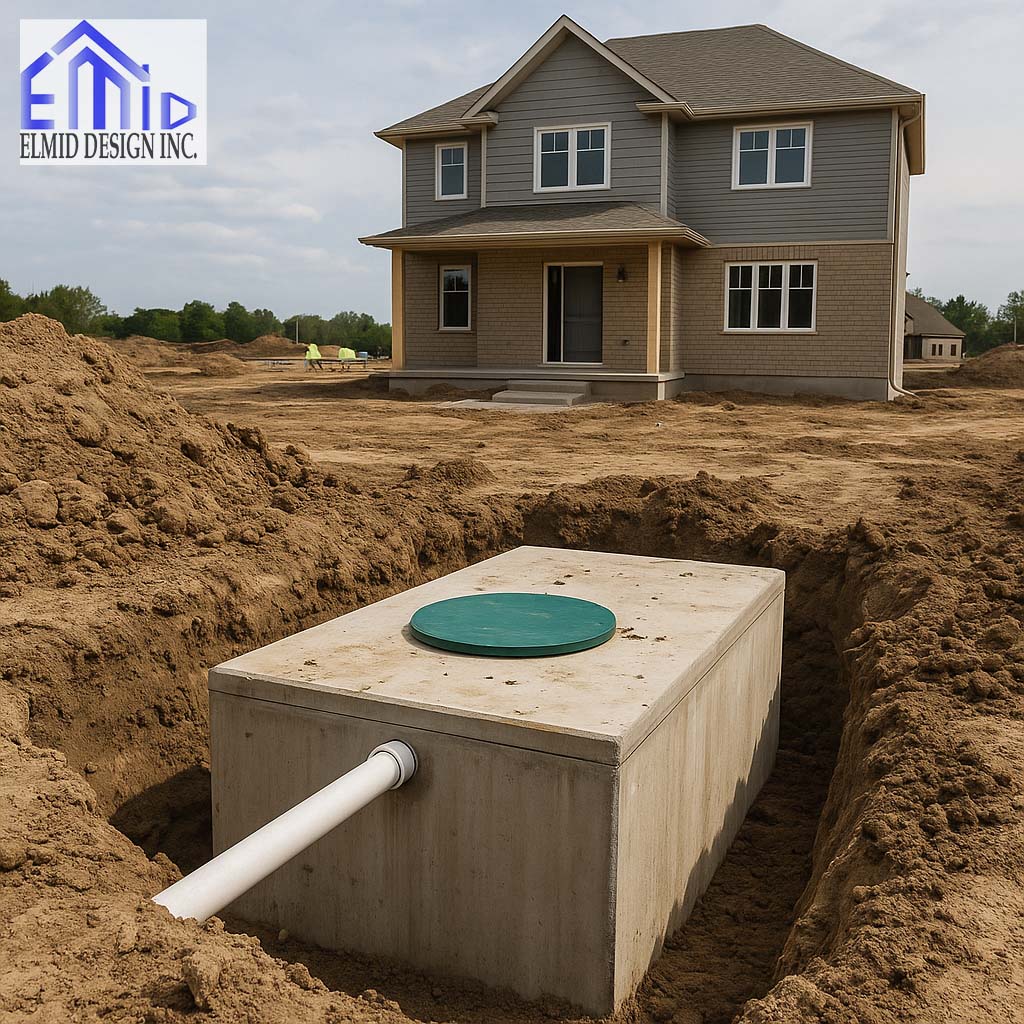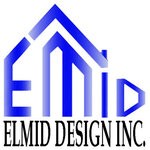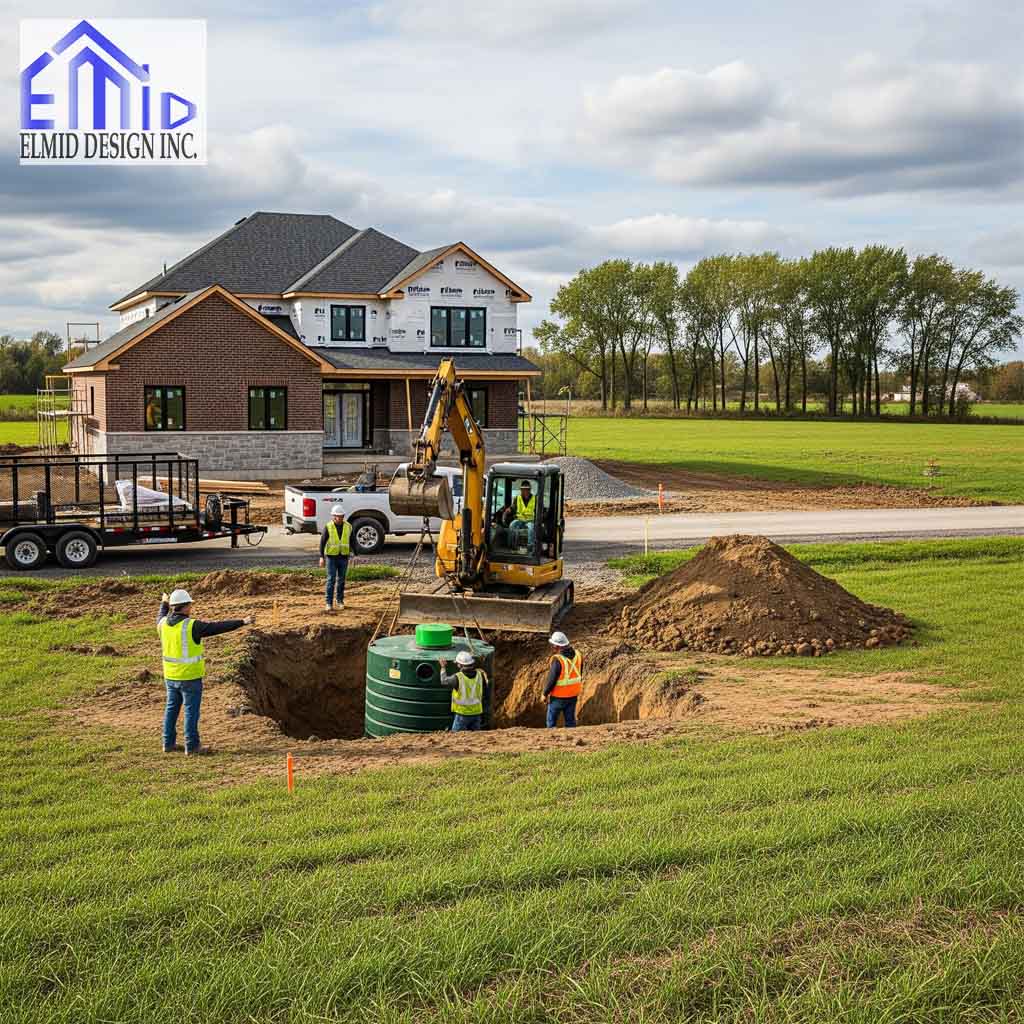Septic design Vaughan ensures reliable, code‑compliant wastewater systems tailored to Vaughan’s soil, environmental, and regulatory context. Homeowners and developers in Vaughan need plans that meet Ontario Building Code Part 8 and municipal requirements, guided by qualified professionals. Keep reading to understand the process, regulations, and expert support available.
Understanding Septic Design Vaughan
In Vaughan septic design must align with Ontario Building Code Part 8, addressing system capacity, soil suitability, and leaching bed sizing. Designers must assess on-site conditions, estimate daily wastewater flow, and choose systems that protect public health and groundwater. Elmid Design Inc and other Ontario firms ensure designs meet technical standards and environmental expectations, reinforcing trust and expertise in septic planning.
Permit and Designer Requirements
Vaughan mandates a building permit for all new or altered septic systems. Designs must include the professional’s name, BCIN number or stamp, signature, and scale‑accurate drawings with soil and water‑table data, site plans, cross‑sections, and treatment unit approvals City of Vaughan. These requirements ensure accountability and regulatory compliance, reinforcing trust for homeowners and authorities.
Site Evaluation and Design Criteria
Designers gather soil data including percolation rates, soil type, groundwater levels, and daily wastewater estimates. For sandy soils, percolation occurs in under ten minutes whereas clay can exceed fifty minutes. These factors determine system size and leaching bed design. Accurate site evaluation ensures functional design and long‑term performance under Vaughan’s varied soil conditions.
Regulatory Framework: Ontario Building Code Part 8
Ontario Building Code Part 8 regulates onsite septic systems up to 10,000 liters per day. It defines classification, system design flows, clearance distances, tank sizing, and maintenance rules. Vaughan refers to Part 8 to ensure septic system design complies with technical, environmental, and public health standards, reinforcing the region’s commitment to safe wastewater management.
Inspections and Maintenance Oversight
Vaughan enforces inspections at key stages of installation. After permit approval, inspectors verify base cut, soil conditions, tank and leaching bed installation, backfill, pumps, and final landscaping. In designated watershed areas, a provincially‑mandated maintenance inspection program requires inspection every five years to protect water sources. Owners may hire private professionals or pay city fees for inspections.
Qualified Professionals Who Design Septic Systems
Qualified designers in Ontario include licensed professional engineers, architects, or registered designers with BCIN. Installers may design only systems they install. Choosing a qualified professional ensures regulatory compliance, reduces liability, and reinforces the expertise needed for septic design Vaughan. Elmid Design Inc exemplifies this standard, as a PEO‑authorized engineering firm serving Vaughan with expert septic planning and documentation.
Working with Local Service Providers
Local firms such as Smith Excavating, Grading & Septic Services offer full‑service septic design and installation throughout Vaughan. They conduct site evaluations, prepare permit drawings, and oversee installation following best practices and Ontario Onsite Wastewater Association standards. Their local knowledge and integrated approach help homeowners navigate the complexities of septic design Vaughan with confidence.
Environmental and Operational Considerations
Well‑designed septic systems minimize environmental risks including nutrient runoff, soil saturation, and system failure. Maintenance remains vital; septic tanks should be inspected and pumped regularly to prevent solids from entering leaching beds. Vaughan’s regulations and inspection programs support responsible ownership and protect public health.

Common Septic System Types Used in Vaughan
In Vaughan most residential properties use either conventional septic systems or advanced treatment units depending on lot size, soil permeability, and water table elevation. A conventional system consists of a septic tank and leaching bed and works well on larger lots with sandy or loamy soils. In contrast, properties with limited space or poor soil drainage often require tertiary treatment systems that include aeration or media filters. These advanced systems reduce nitrogen and bacteria before effluent dispersal which helps meet stricter environmental guidelines. Local design firms assess each site to recommend the most suitable system and ensure full compliance with the Ontario Building Code and City of Vaughan regulations.
Septic Design for Small Lots in Vaughan
Small residential lots in Vaughan require custom septic solutions due to limited space and stricter setback rules. These lots often demand innovative systems like shallow buried trenches or tertiary treatment units with reduced leaching bed sizes. Local engineers evaluate site constraints such as high water tables, lot grading, and tree coverage to propose feasible solutions that still meet Part 8 standards. Vaughan’s urban growth has led to more infill construction where these compact systems become essential. Elmid Design Inc specializes in creating custom septic layouts for such properties, offering engineered plans that satisfy both municipal and environmental requirements while optimizing space use.
How Soil Conditions Impact Septic Design Vaughan
The soil type directly affects septic performance in Vaughan. Sandy soils absorb water quickly and allow effluent to filter naturally, requiring standard leaching beds with basic trench layouts. Clay soils drain slowly and retain water, increasing the risk of surface ponding or system failure. Designers must adjust the bed size or use pressurized distribution systems to maintain safe operation in poor soils. Rock layers or high groundwater further complicate installation and often call for raised systems or imported fill. Accurate soil tests help engineers choose systems that match site-specific hydrological conditions and ensure long-term reliability without environmental impact or homeowner liability.
Vaughan’s Requirements for Septic System Replacement
Replacing a failing septic system in Vaughan involves the same permit and design steps as new installations. Homeowners must submit updated site evaluations, detailed design drawings, and hire licensed contractors approved under Ontario Building Code guidelines. The City of Vaughan requires all new or replacement systems to comply with modern setbacks from wells, buildings, and property lines. If an older system no longer meets these standards, upgrades may involve new treatment units or relocated leaching beds. Elmid Design Inc provides engineered designs for both replacement and new septic systems, ensuring that clients meet today’s technical and environmental benchmarks for residential wastewater disposal.
Importance of PEO-Authorized Designers in Vaughan
Working with a PEO-authorized firm like Elmid Design Inc guarantees professional accountability and legal compliance for septic design Vaughan. PEO, or Professional Engineers Ontario, regulates engineering practices under the Professional Engineers Act and enforces design standards across Ontario. Only licensed engineers can seal drawings for complex systems or sites with technical constraints. These experts carry liability insurance and follow ethical obligations that safeguard clients against future issues. Vaughan’s building department recognizes stamped designs from PEO-certified professionals as part of the permit review process, ensuring faster approval timelines and confidence in system performance. Engaging qualified designers protects property value and public health.
Cost Factors Influencing Septic Design Vaughan
Septic design costs in Vaughan vary based on soil testing, system complexity, and lot conditions. A basic conventional design on a sandy site typically costs less than complex systems with tertiary treatment units, pressurized distribution, or raised leaching beds. Design fees usually include site evaluation, system layout, permit documentation, and coordination with installers. Vaughan’s permit fees and any required environmental studies may increase the total project budget. Homeowners should also budget for system maintenance and inspections after installation. Companies like Elmid Design Inc provide transparent pricing and cost-effective solutions tailored to Vaughan properties, balancing regulatory compliance with long-term system durability.
Final Thoughts on Septic Design Vaughan
Septic design Vaughan demands expert attention to site-specific variables, local regulations, and long-term reliability. Homeowners and developers benefit from partnering with qualified professionals like Elmid Design Inc who bring engineering precision, PEO authorization, and familiarity with Vaughan’s permitting process. Proper design not only protects the environment and public health but also avoids costly system failures and legal issues. Vaughan’s evolving land development patterns, including infill housing and small-lot construction, make professional guidance more critical than ever. Choosing experienced, accredited firms ensures that every septic installation stands up to both technical standards and municipal scrutiny.
Seasonal Challenges in Septic Design Vaughan
Seasonal changes in Vaughan affect septic system performance and must be considered during the design phase. During spring thaw, elevated groundwater can reduce soil permeability and increase the risk of system failure if not properly managed. In winter, freezing temperatures can impact pipe integrity and effluent flow unless components are installed below the frost line. Engineers must evaluate seasonal groundwater fluctuation and snow accumulation patterns to design systems that remain effective year-round. By considering Vaughan’s seasonal climate in advance, designers prevent costly failures and ensure systems meet year-round health and safety expectations.
Integrating Green Septic Technology in Vaughan
As Vaughan becomes more environmentally conscious, homeowners are opting for green septic technologies that reduce environmental impact and improve efficiency. These systems use biological filters, recirculating media beds, or solar-powered components to treat effluent to a higher standard before dispersal. While more costly upfront, these systems reduce long-term maintenance and offer environmental benefits especially in sensitive watershed areas. Design professionals like those at Elmid Design Inc evaluate the viability of green alternatives during the planning phase to ensure the system fits site conditions and complies with provincial approvals under the Ontario Building Code and BMEC.
Septic Design for New Subdivisions in Vaughan
Developers planning new subdivisions in Vaughan must address wastewater disposal for each lot during the planning approval process. If municipal sewer service is not available, engineers must submit individual or communal septic designs that meet Ontario Building Code requirements and municipal planning policies. Communal systems may be required in cluster developments or environmentally sensitive zones. Each lot needs a soil evaluation and a clear strategy for leaching bed placement and future maintenance. Professional firms coordinate with surveyors and planners to ensure seamless integration of septic systems into subdivision plans, which helps avoid development delays and costly redesigns.
How Septic System Maintenance Affects Long-Term Design
Even the best septic design in Vaughan can fail if regular maintenance is neglected. Design professionals often plan systems with accessible lids, risers, and cleanouts to encourage proper service. Proper maintenance extends the system’s lifespan and protects the local environment. Vaughan’s requirement for maintenance inspections every five years in certain areas means that system durability and serviceability must be integrated into the original design. This includes proper tank sizing, scum and sludge monitoring access, and easily serviced pumps. Well-designed systems that are easy to maintain reduce long-term homeowner costs and meet the city’s environmental protection goals.
Long-Term Value of Professional Septic Design in Vaughan
Professional septic design in Vaughan increases property value by ensuring safe wastewater management that meets or exceeds code. Buyers often seek properties with documented, engineered systems that include maintenance records and municipal approvals. An engineered system designed by a PEO-authorized firm like Elmid Design Inc carries credibility and reduces the risk of future legal or environmental issues. For builders, proper septic design facilitates faster permit approval and avoids costly redesigns during construction. By investing in qualified design, property owners protect their investment while also contributing to safer groundwater and healthier living environments for their communities.
Addressing High Water Table Challenges in Vaughan
In Vaughan, high groundwater tables present a serious obstacle for septic design. When the seasonal high water level rises too close to the surface, it can compromise the leaching bed’s ability to absorb and treat effluent. Engineers must conduct groundwater level monitoring before selecting a system. Raised leaching beds or tertiary treatment options often become necessary for sites with saturated soil conditions. These solutions elevate the system above the water table, creating separation between untreated effluent and surrounding groundwater. Proper design with documented water level data allows for successful permit approval and reduces the long-term risk of effluent breakout, contamination, or system failure.
Impact of Vaughan’s Topography on Septic Design
Topographical features in Vaughan such as slopes, ravines, and elevation changes significantly influence septic system layout. Properties located on sloped terrain require strategic placement of tanks and beds to allow proper gravity flow without increasing erosion risks. Runoff control becomes essential to avoid surface water entering the leaching bed zone. Designers use site grading and controlled trench alignment to maintain system efficiency and prevent overloading from stormwater. Sites with steep grades may require pump systems to move effluent safely uphill or downhill depending on the home’s location. Each design must adapt to topographic limitations without compromising performance or safety.
Septic Design for Additions and Renovations in Vaughan
When adding bedrooms or increasing fixture counts in Vaughan, existing septic systems may no longer meet code. The Ontario Building Code requires a recalculation of daily design flow and often a complete redesign of the system. Even if the existing system performs well, its design may not support the new load. Homeowners planning additions must involve a septic designer early in the project to confirm system capacity. Design upgrades may include enlarging the tank, expanding the leaching bed, or switching to a more advanced treatment unit. These changes must be documented and submitted to the city as part of the building permit application.
Planning Septic Systems in Environmentally Sensitive Areas
Vaughan includes regulated lands such as conservation zones and areas near wetlands or bodies of water that demand extra design scrutiny. Septic systems in these zones must meet tighter setback distances, filtration standards, and sometimes require Ministry of Environment approvals. Design professionals coordinate with agencies like Toronto and Region Conservation Authority to ensure systems do not negatively impact protected ecosystems. This involves careful mapping, soil studies, and erosion prevention strategies. The design must also account for water table fluctuation and possible stormwater influence. These sites often benefit from tertiary systems that offer enhanced filtration and reduced effluent volume.
Role of Municipal Inspectors in the Septic Process
Throughout the septic design and installation process in Vaughan, municipal building inspectors play a critical role. After a system receives permit approval, the city conducts inspections at multiple stages including base excavation, tank placement, leaching bed construction, and final grading. Inspectors verify that materials, dimensions, and slopes match approved plans. If discrepancies arise, they require corrections before proceeding. Their oversight ensures that systems follow code and function properly for long-term safety. Working with qualified design firms makes the inspection process smoother since professionals understand what inspectors require and ensure that all documentation and execution align with municipal expectations.
Frequently Asked Questions
What is required to get a septic permit in Vaughan?
To get a septic permit in Vaughan, you need a complete design prepared by a qualified professional including soil evaluation, daily flow calculation, system layout, and the designer’s BCIN or PEO seal. The application must meet Ontario Building Code Part 8 requirements.
How do I know if my Vaughan property needs a septic system?
If your property is not connected to a municipal sewer, you need an onsite septic system. A licensed designer or engineer can confirm this after reviewing site maps and conducting a property inspection.
Who can legally design a septic system in Vaughan?
Only professionals with a valid BCIN or licensed engineers approved by Professional Engineers Ontario can design septic systems. They must stamp the drawings for permit submission to Vaughan’s building department.
What is the cost of septic design in Vaughan?
Costs vary by lot size, soil condition, and system complexity. Basic designs may start under $2,000 while complex or environmentally sensitive sites may require additional fees for soil testing and approvals.
Can I install my own septic system in Vaughan?
Homeowners cannot install systems without licensed contractors. Vaughan requires installations to be completed by qualified installers with proven knowledge of Ontario Building Code Part 8 standards and local guidelines.

Why Homeowners in Vaughan Trust Elmid Design Inc for Septic Design
Elmid Design Inc is a PEO-authorized engineering firm that specializes in septic design across Vaughan and surrounding regions. With expert knowledge of Ontario Building Code Part 8 and local regulations, the team delivers precise, code-compliant plans tailored to each site. Their licensed engineers conduct soil analysis, site evaluations, and full permit documentation, ensuring faster approvals and long-term system performance. Elmid Design Inc combines technical excellence with local insight, making them a trusted choice for residential and commercial septic projects that meet both municipal and environmental standards.
Geographic Locations That We Service:
Our Licensed Professional Engineers specializing in Engineered Site Grading Plans offer the best-engineered site grading plan, lot grading and erosion plan, and drainage plan to obtain site plan approval and building permits in Ontario, including a wide range of municipalities. Each area boasts unique features and requirements, making our tailored approach essential for success.
Toronto and Surrounding Areas
In the vibrant heart of Ontario, we service Toronto (City of Toronto) and surrounding areas. Additionally, we cover Oshawa (City of Oshawa), Pickering (City of Pickering), and Clarington (Municipality of Clarington). Furthermore, our expertise extends to Ajax (Town of Ajax), Whitby (Town of Whitby), Brock (Township of Brock), Scugog (Township of Scugog), and Uxbridge (Township of Uxbridge).
Halton Region
Moving to the Halton Region, our services encompass Burlington (City of Burlington) and Halton Hills (Town of Halton Hills). Also included are Milton (Town of Milton) and Oakville (Town of Oakville).
Peel Region
In the Peel Region, we provide services in Brampton (City of Brampton), Mississauga (City of Mississauga), and Caledon (Town of Caledon).
York Region
Our services in the York Region cover Vaughan (City of Vaughan), Aurora (Town of Aurora), and East Gwillimbury (Town of East Gwillimbury). We also cater to Georgina (Town of Georgina), Markham (City of Markham), Newmarket (Town of Newmarket), Richmond Hill (City of Richmond Hill), Whitchurch-Stouffville (Town of Whitchurch-Stouffville), King (Township of King), and Bradford-West Gwillimbury (Town of Bradford-West Gwillimbury). Each municipality here offers a distinct setting, requiring our specialized approach.
Other Southern Ontario Cities and Towns
We also serve many other cities and towns in Southern Ontario. These include Hamilton (City of Hamilton), St. Catharines (City of St. Catharines), Niagara on the Lake (Town of Niagara on the Lake), Brant (County of Brant), Cambridge (City of Cambridge), Kitchener (City of Kitchener), Waterloo (City of Waterloo), and Woodstock (City of Woodstock). Furthermore, we operate in Guelph (City of Guelph), Centre Wellington (Township of Centre Wellington), Shelburne (Town of Shelburne), Orangeville (Town of Orangeville), New Tecumseth (Town of New Tecumseth), Essa (Town of Essa), Collingwood (Town of Collingwood), Wasaga Beach (Town of Wasaga Beach), Barrie (City of Barrie), Midland (Town of Midland), Orillia (City of Orillia), Ramara (Town of Ramara), Minden Hills (Town of Minden Hills), North Kawartha (Town of North Kawartha), Kawartha Lakes (City of Kawartha Lakes), Peterborough (City of Peterborough), Selwyn (Town of Selwyn), and Brighton (Municipality of Brighton).




